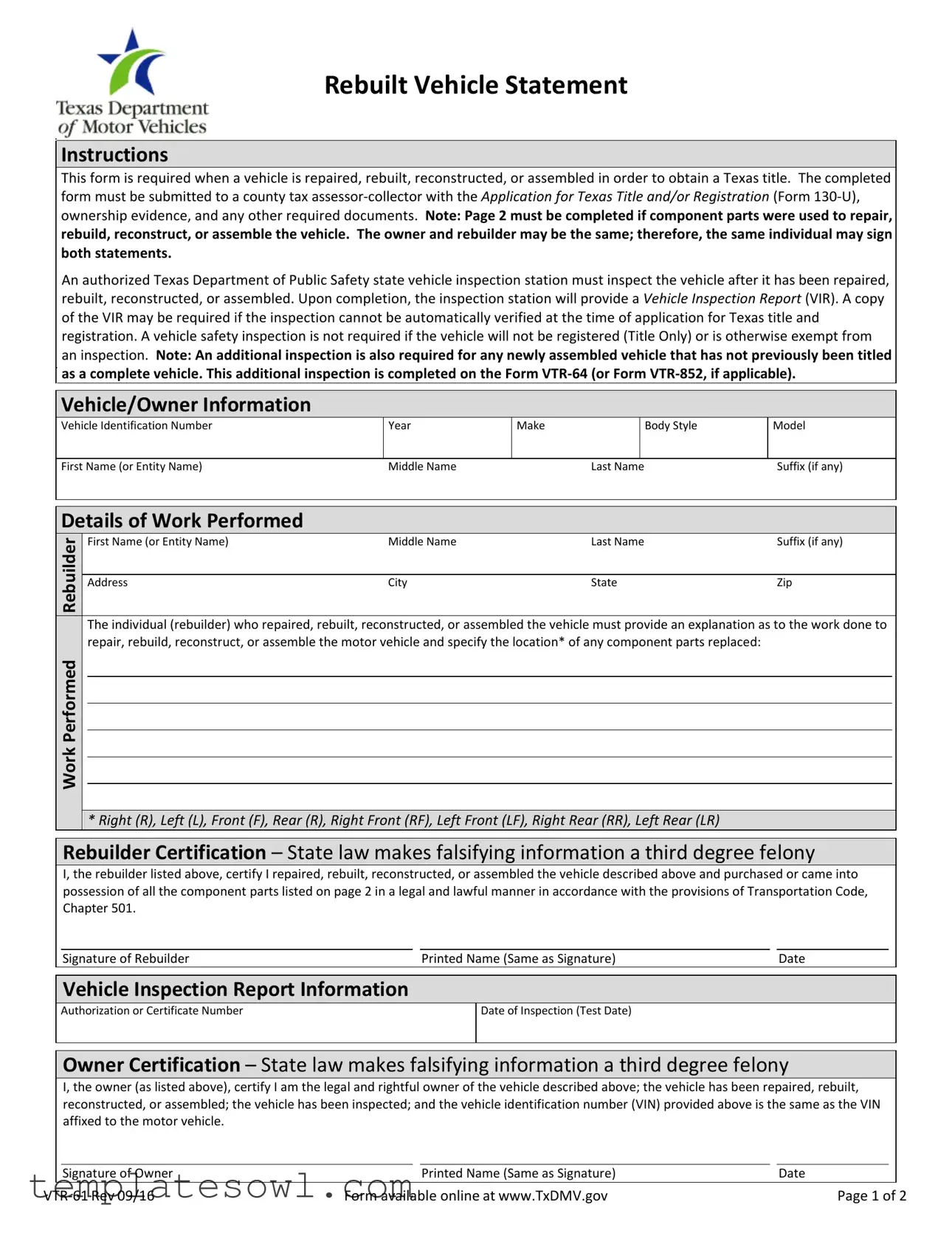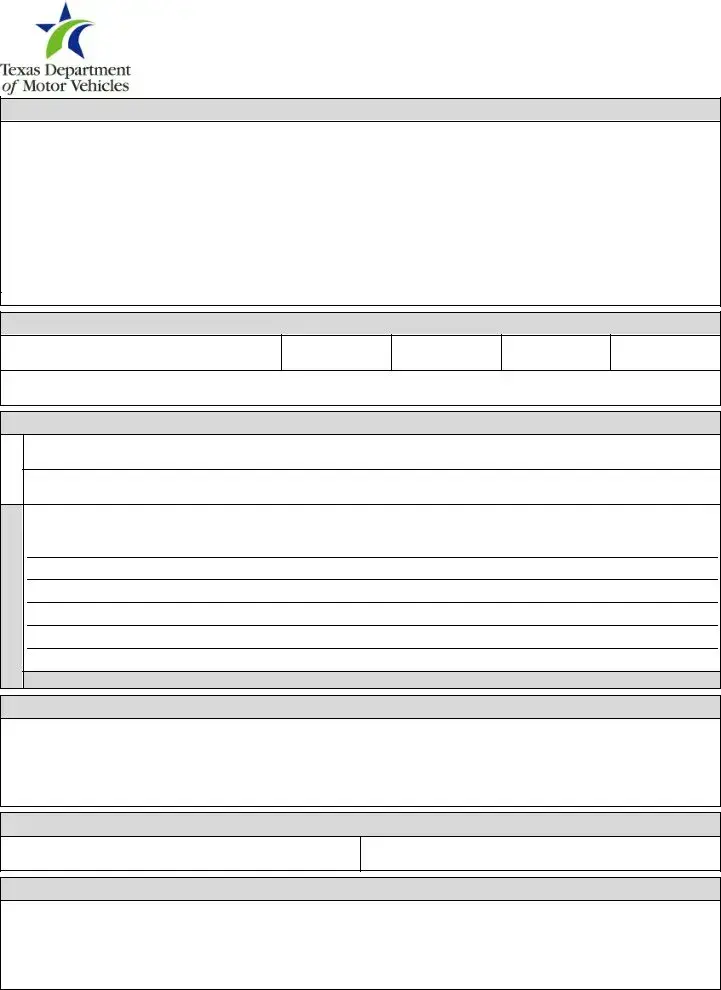What is the VTR 61 form?
The VTR 61 form, also known as the Rebuilt Vehicle Statement, is a document required in Texas when a vehicle has been repaired, rebuilt, reconstructed, or assembled. This form must be submitted to a county tax assessor-collector along with an application for a Texas title and registration, ownership evidence, and any other necessary documents.
When do I need to complete the VTR 61 form?
You need to complete the VTR 61 form when you have made significant changes to a vehicle, such as repairing, rebuilding, reconstructing, or assembling it. This applies especially if you want to obtain a title for the vehicle in Texas. If any component parts were used in these processes, Page 2 of the form must also be completed.
Who can sign the VTR 61 form?
Both the owner and the rebuilder of the vehicle can sign the VTR 61 form. In some cases, they may be the same person. The rebuilder must certify the work done and have legal possession of the component parts used in the repair or assembly of the vehicle.
Is an inspection required for my vehicle before submitting the VTR 61 form?
Yes, an authorized Texas Department of Public Safety state vehicle inspection station must inspect your vehicle after repairs have been made. They will provide a Vehicle Inspection Report (VIR), which may be required when applying for the Texas title and registration.
What information do I need to provide about the work performed on the vehicle?
In the "Details of Work Performed" section, you must describe the repairs or assembly completed, as well as the location of any component parts that were replaced. Locations such as right or left, front or rear should be specified for each part listed.
What if my vehicle will not be registered?
If your vehicle will not be registered and you are only seeking title, a vehicle safety inspection is not required. However, ensure that you follow all other necessary steps to complete your title application.
What documentation do I need to submit along with the VTR 61 form?
You need to submit the completed VTR 61 form along with the Application for Texas Title and/or Registration (Form 130-U), proof of ownership, any bills of sale for component parts, and a Vehicle Inspection Report (if required).
What are the consequences of providing false information on the VTR 61 form?
Falsifying any information on the VTR 61 form is considered a third-degree felony under Texas law. Both the owner and the rebuilder must certify the truthfulness of the information provided, and any misrepresentation can lead to serious legal consequences.


